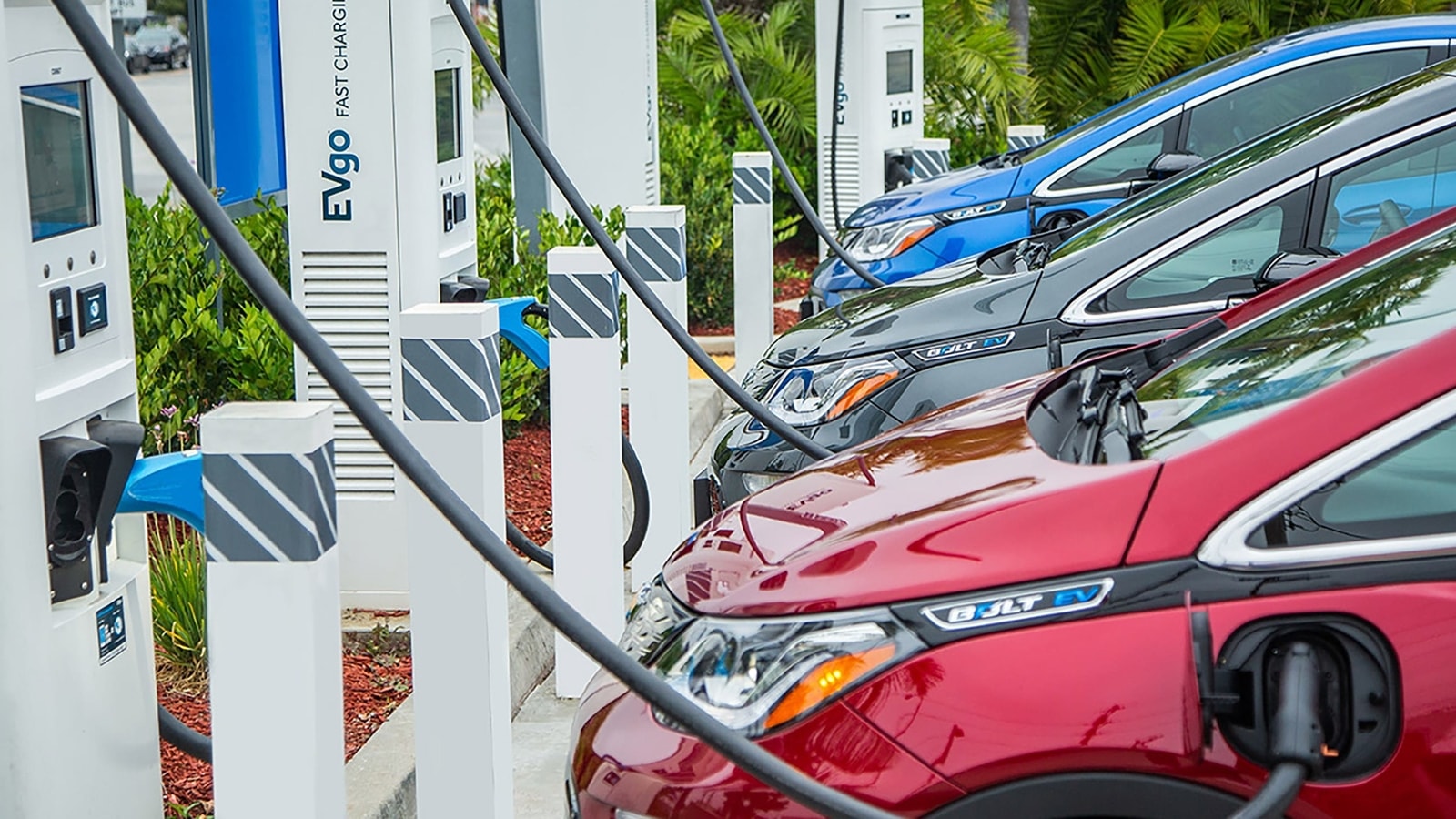Many experts agree that electric vehicles (EVs) will be the primary choice for many car buyers by the middle of the next decade. For example, Statista predicts that, by 2020, car sales will account for 91% of the new vehicle market.
Similarly, the International Energy Agency projects that EVs will account for 48% of new car sales by 2030—this is even before we see any self charging cars. These statistics should come as no surprise. After all, EVs are attractive because they don’t have to refuel and typically cost less to operate than conventional cars. All of this means that automakers are racing to ramp up their production capacities so they can meet growing demand from consumers.
Their efforts are already starting to pay off: in 2018, more than one million EVs were sold globally . However, not everyone agrees on when we will reach mass adoption. Some believe that mass adoption will happen sooner than others do—and here we look at some key indicators that suggest the end could be in sight sooner rather than later.
New car sales

In recent years, carmakers have been striving to make EVs more appealing to consumers, with many launching new models with enhanced features intended to justify the higher price. For example, Tesla launched its Model 3 in 2017 and has since continued to add new features to its range.
Meanwhile, more affordable models are also entering the market. For example, Hyundai recently launched its Nexo model, which can charge a car in under three minutes and costs less than $50,000—less than half the cost of the Model 3.
This trend suggests that automakers are starting to see the benefits of increasing their EV sales—and this is further supported by the fact that EV sales are already growing. In 2018, EV sales increased by 21.4%—almost double the rate of growth for conventional cars. While this growth is likely to be slowed as more EVs enter the market, it does indicate that consumers are becoming increasingly willing to adopt this technology.
Self-driving cars on the road

Autonomous driving is expected to become mainstream in the coming years. This means that a car can perform some of the functions of the driver, allowing them to safely operate the vehicle and rest while the car drives autonomously. This is particularly appealing for long-distance travel, where drivers could spend many hours in the car without having to interact with the road.
This technology holds the promise of significantly reducing emissions, as well as increasing road safety. In many parts of the world, autonomous cars are already on the road—and they are showing that they can enhance safety and convenience. For example, autonomous cars can help people with disabilities by allowing them to safely drive and park their vehicles.
Unfortunately, it is important to remember that autonomous cars are still at their early stages and have limitations. For example, autonomous cars are not yet able to drive in heavy rain or in adverse weather conditions. This means that people will still be required to drive manually; however, it is likely that this will become less common as autonomous cars become more widespread. The fact that autonomous cars are already on the roads also indicates that mass adoption is likely to happen sooner than later.
Battery production and price reduction
One of the primary challenges for EV manufacturers is the low cost of EV batteries. They are the main cost of owning an EV and need regular replacement. While the initial cost is high, the price of batteries is expected to decrease significantly in the near future.
As more batteries are produced and competition increases, the price of batteries is likely to come down. This is particularly important as manufacturers strive to meet the increasing demand for EV batteries. While many people simply look at the amount of energy that an EV has, they are also looking at how much time an EV will last on a single charge.
In order to meet this demand, car manufacturers are developing more advanced batteries, which could reduce the cost of EVs significantly. In addition, some manufacturers are also exploring the potential of batteries that can be charged through solar power. This could make EVs more appealing to consumers, particularly in countries with sunny climates. It could also help increase the adoption of EVs in countries where there is a poor charging infrastructure or where the price of electricity is high.
Tax incentives for EV purchases

EVs are becoming increasingly popular because of the potential for tax savings. In many countries, EV owners can claim savings on their taxes by charging their vehicles at home or at work. This is particularly appealing for people who don’t have a garage to park their car—it means that they don’t have to pay for the cost of parking.
Many cities and states in the US now offer tax incentives for those who purchase EVs. For example, Washington state offers an income tax credit of $2,500 for those who purchase an EV. This credit can be claimed regardless of how much money the buyer makes and means that EVs are becoming more affordable for consumers.
Rapid charging network expansion

Many consumers are reluctant to purchase EVs if they have to wait a long time to charge their cars—especially as the cost of charging is increasing. Thankfully, this is one challenge that could be addressed in the coming years. As EVs become more mainstream, more charging stations are likely to come online. This could ease the pressure on charging infrastructure, particularly as more and more consumers adopt EVs.
Providers are ramping up efforts to expand the charging infrastructure and are also exploring alternative forms of charging, such as charging using wind energy. In addition, the growing popularity of EVs could result in more investment in charging infrastructure. This could open the way for charging stations to be installed at public locations, such as airports and train stations.
Bottom line
With an increasing number of people choosing EVs, mass adoption is starting to look more likely. This is further supported by the fact that EV sales are already growing and that autonomous cars are already on the road. The low cost of EV batteries is also likely to come down in the near future, resulting in lower costs for consumers.
In addition, more charging stations are expected to be installed and the cost of charging is likely to come down. These factors combined suggest that the mass adoption of EVs is expected to happen sooner rather than later.






